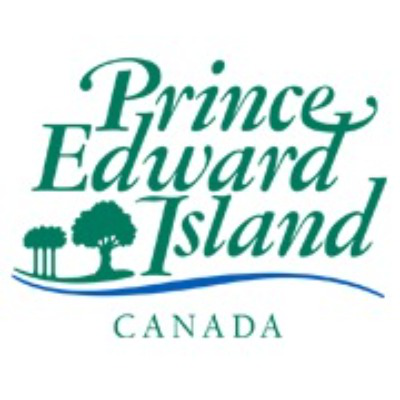Government information
Type of resources
Available actions
Topics
Keywords
Contact for the resource
Provided by
Formats
Representation types
Update frequencies
status
-

2015 to 2018 Capital Bridges
-

2015 to 2018 Capital Roads
-

Railway network on the territory of the city. **Collection context** Historical data from the Government of Quebec. Additional data by photointerpretation. **Collection method** Computer-aided mapping. **Attributes** * `ID_VFR` (`integer`): Identifier * `SOURCE` (`varchar`): Source * `DATE_CREATION` (`smalldatetime`): Created on * `DATE_MODIFICATION` (`smalldatetime`): Modified on * `USER_MODIFICATION` (`varchar`): Modified by For more information, consult the metadata on the Isogeo catalog (OpenCatalog link).**This third party metadata element was translated using an automated translation tool (Amazon Translate).**
-

Electoral division of the 2017 election. **Collection context** Creation of districts in collaboration with the legal services and the electoral data of the Director General of Elections (DGE). Balancing of districts according to anthropogenic constraints and number of voters. **Collection method** Computer-aided mapping. **Attributes** * `ID_SEC_DIS` (`long`): Identifier * `NAME_DISTRI` (`varchar`): District name * `NO` (`long`): District number * `AREA` (`varchar`): Area * `ADVISORY_NAME` (`varchar`): Name of the advisor * `SOURCE` (`varchar`): Source * `DATE_CREAT` (`date`): Creation date * `DATE_MODIF` (`date`): Date of modification * `USER_MODIF` (`varchar`): Modified by For more information, consult the metadata on the Isogeo catalog (OpenCatalog link).**This third party metadata element was translated using an automated translation tool (Amazon Translate).**
-

Sectors targeted for urban densification. Polygons resulting from an analysis by the urban planning department and identified as areas conducive to urban densification. **Collection context** Areas determined by the urban planning department. Manual analysis and limits according to an anthropogenic constraint, a street or a zoning limit. **Collection method** Technical drawing and computer-aided mapping. **Attributes** * `ID_ZONAGE` (`long`): Zoning ID * `NUM_ZONE` (`varchar`): Zone number * `GROUPE_USA` (`varchar`): Use group * `LABEL` (`varchar`): Label * `DATE_CREAT` (`date`): Creation date * `DATE_MODIF` (`date`): Date of modification * `USER_MODIF` (`varchar`): Modified by * `Source` (`varchar`): Source * `GRILLE_URL` (`varchar`): Grid of uses For more information, consult the metadata on the Isogeo catalog (OpenCatalog link).**This third party metadata element was translated using an automated translation tool (Amazon Translate).**
-

Major assignment layer. **Collection context** Taken from the zoning by-law. **Collection method** Computer-aided mapping. **Attributes** * `ID_ASSIGNATION` (`integer`): Identifier * `ASSIGNMENT` (`varchar`): Assignment * `CODE_ASSIGNATION` (`varchar`): Assignment code * `ZON_AREA` (`numeric`): Area * `SECTOR` (`varchar`): Sector * `NOTE` (`varchar`): Note * `DATE_CREATION` (`smalldatetime`): Created on * `DATE_MODIFICATION` (`smalldatetime`): Modified on * `USER_MODIFICATION` (`varchar`): Modified by * `SOURCE` (`varchar`): Source For more information, consult the metadata on the Isogeo catalog (OpenCatalog link).**This third party metadata element was translated using an automated translation tool (Amazon Translate).**
-

Polygonal layer of electoral districts for the 2025 election. New balancing of voters increases the number of districts from 11 to 10 for the 2025 election. **Collection context** Review committee to balance the districts according to the data of the Chief Electoral Officer. **Collection method** Analysis of voters by address using cartographic analysis software. Update by computer-aided mapping. **Attributes** * `ID_SEC_DISTRICT_ELEC` (`integer`): Identifier * `DISTRICT_NAME` (`varchar`): District name * `NO` (`integer`): Number * `AREA` (`varchar`): Area * `ADVISOR_NAME` (`varchar`): Recommended * `SOURCE` (`varchar`): Source * `DATE_CREATION` (`smalldatetime`): Created on * `DATE_MODIFICATION` (`smalldatetime`): Modified on * `USER_MODIFICATION` (`varchar`): Modified by For more information, consult the metadata on the Isogeo catalog (OpenCatalog link).**This third party metadata element was translated using an automated translation tool (Amazon Translate).**
-

Buffer zone of 300 meters around the railways present on the territory of the city. Used in public safety analyses. **Collection context** Derived from the layer of railways in the territory of the city of Saint-Hyacinthe. **Collection method** Buffer zone of 300 meters. Spatial analysis. **Attributes** * `Id` (`long`): Identifier For more information, consult the metadata on the Isogeo catalog (OpenCatalog link).**This third party metadata element was translated using an automated translation tool (Amazon Translate).**
-

Pedestrian trail network. **Collection context** Updates provided by the recreation department. **Collection method** Computer-aided mapping. **Attributes** * `ID_PIETON` (`integer`): Identifier * `Type` (`varchar`): Type * `LOCATION` (`varchar`): Location * `LABEL` (`varchar`): Label * `Coating` (`nchar`): Coating * `DATE_INSTALLE` (`smalldatetime`): Installed on * `Project` (`varchar`): Projected * `LENGTH` (`numeric`): Length * `NOTES` (`varchar`): Notes * `SOURCE` (`varchar`): Source * `DATE_CREATION` (`smalldatetime`): Created on * `DATE_MODIFICATION` (`smalldatetime`): Modified on * `USER_MODIFICATION` (`varchar`): Modified by For more information, consult the metadata on the Isogeo catalog (OpenCatalog link).**This third party metadata element was translated using an automated translation tool (Amazon Translate).**
-

Position of address points. **Collection context** Initial source of the Qc address databases, the urban planning department, the engineering department and the DGE. Analysis and coupling of the various sources to create a comprehensive research layer for the needs of the city's internal users. Timely maintenance using the address change reports from the urban planning department and changes to the property records from the assessment department. **Collection method** Computer-aided mapping. **Attributes** * `ID_ADRCIV` (`integer`): Identifier * `NOCIVQ` (`integer`): Civic number * `NOCIV_SUFX` (`varchar`): Number suffix * `ODO_INDEX_LONG` (`varchar`): Long index odonym * `ODO_INDEX_COURT` (`varchar`): Short index odonym * `ADQNBUNITE` (`integer`): Number of Qc address units * `CODE_POST` (`varchar`): Postal code * `MAT10` (`varchar`): Number * `SOURCE` (`varchar`): Source * `DATE_CREATION` (`smalldatetime`): Created on * `DATE_MODIFICATION` (`smalldatetime`): Modified on * `USER_MODIFICATION` (`varchar`): Modified by * `DATE_ARCHIVE` (`smalldatetime`): Archive date * `ODO_LONG_COMPLETE` (`varchar`): Full long odonym * `ODO_COURT_COMPLET` (`varchar`): Full short odonym * `ODONYM` (`varchar`): Odonym * `LOC_X` (`numeric`): x * `LOC_Y` (`numeric`): y For more information, consult the metadata on the Isogeo catalog (OpenCatalog link).**This third party metadata element was translated using an automated translation tool (Amazon Translate).**
 Arctic SDI catalogue
Arctic SDI catalogue